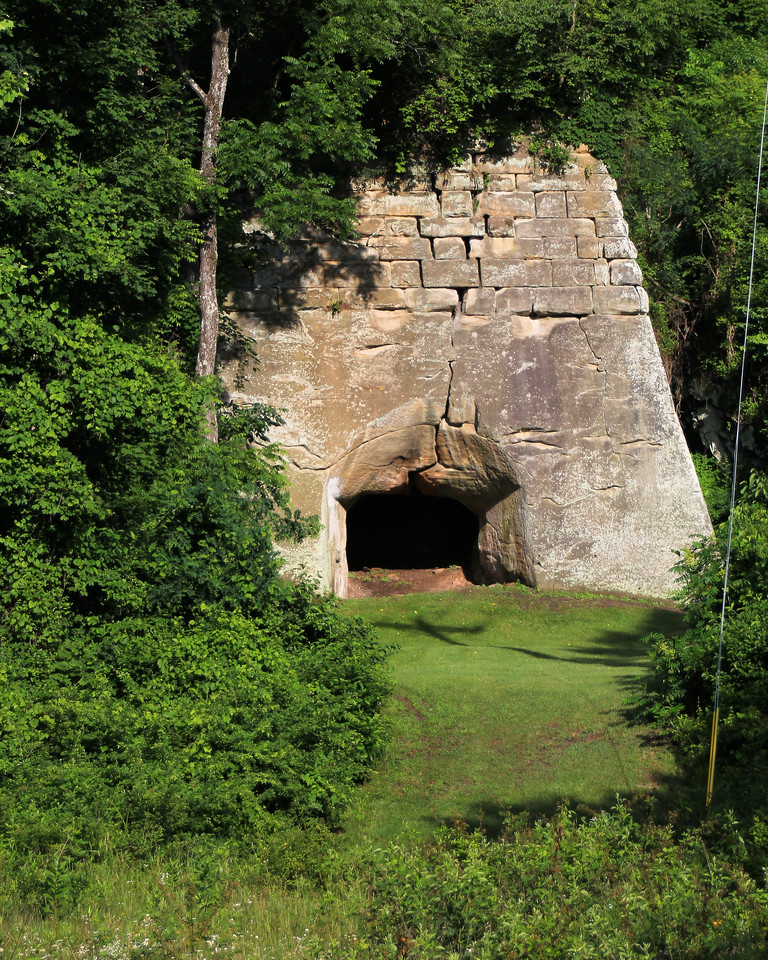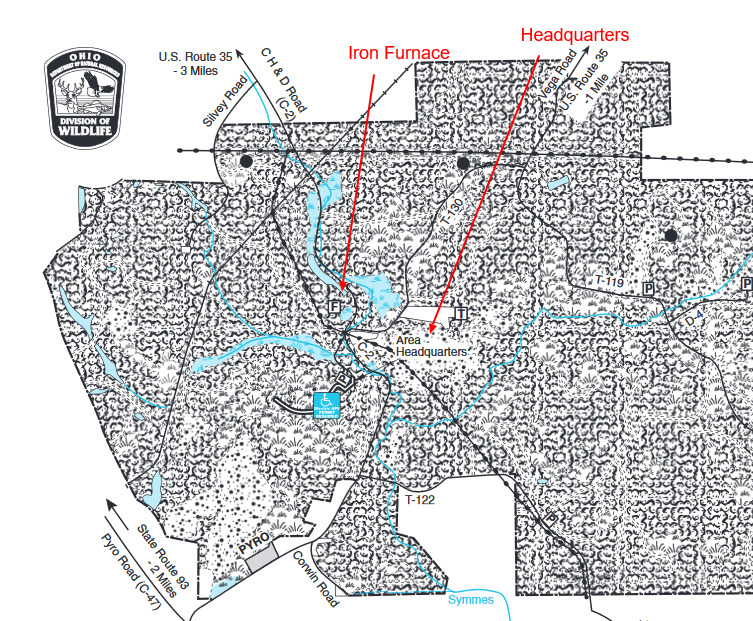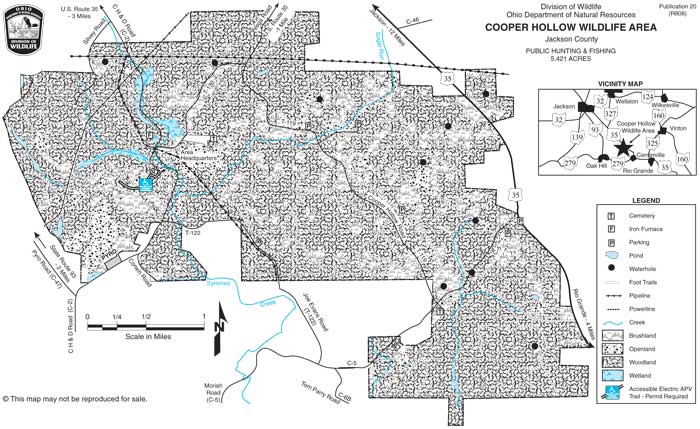Cooper Hollow Wildlife Area--Headquarters and Iron Furnace

Cooper Hollow Wildlife Area--Headquarters and Iron Furnace
Oak Hill, Ohio 45656
Cooper Hollow Wildlife Area Official WebsiteCooper Hollow Wildlife Area webpage
Cooper Hollow Wildlife Area map
About Cooper Hollow Wildlife Area
See all hotspots at Cooper Hollow Wildlife Area
The 5,421-acre Cooper Hollow Wildlife Area lies 12 miles southeast of Jackson on US-35. The scenic rolling hills are dissected by Symmes Creek, a small, low-gradient stream, and several of its tributaries.
More than half the area is wooded. Oak and hickory are the most common upland trees, with elm, ash, and silver maple along the streams. Virginia pine occurs in reverting upland fields. Index of Ohio’s trees from the Division of Forestry. Twenty percent of the area consists of reverting old fields with a mixture of shrubby coverts and native grasses. Wild crabapple, hawthorn, flowering dogwood, sassafras, sumac, and Japanese honeysuckle are important wildlife food species in these old fields.
Other important wildlife habitats include several beaver ponds and seasonally flooded shrubby wetlands associated with Symmes Creek.
Originally the entire area was forested. During the 1800s most of the forest in the wildlife area and in Jackson County was clear-cut for agricultural purposes and to make charcoal for the local iron industry. Purchase of land for this wildlife area began in 1953. By that time most of the land consisted of cutover woodland and abandoned farmland.
The area was originally purchased for upland wildlife and forest wildlife management purposes. Croplands have since been retired and the area is managed intensively for wildlife species associated with forest habitat types. Management work has included selective improvement of existing woodland, the addition of squirrel den boxes, and maintenance of shrubby coverts and open land by selective cutting and controlled burning.
Features
Restrooms on site
Content from Cooper Hollow Wildlife Area webpage

